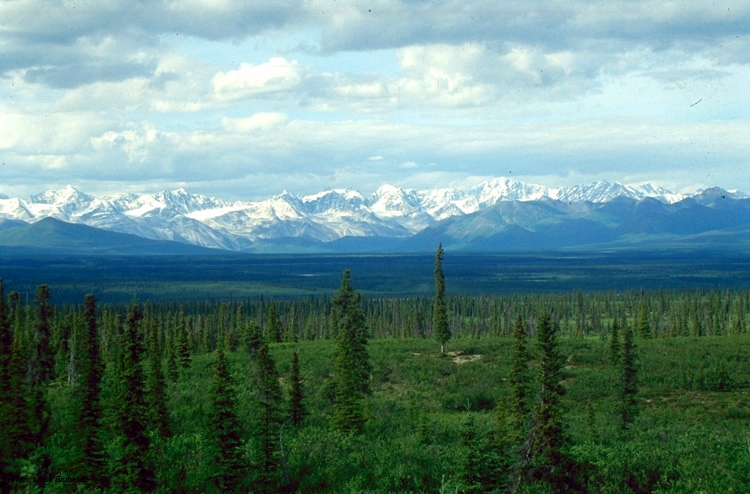Response:
"An adult elephant consumes 140–270 kg (300–600 lb) of food a day."
BrandtMichaels: "Therefore, vast quantities of food were needed to support the estimated 5,000,000 mammoths that lived in just a small portion of northern Siberia."
Response:
"A 2008 study by scientists at Spain's Museo Nacional de Ciencias Naturales estimated that changes in climate shrank suitable mammoth habitat from 7,700,000 km2 (2,970,000 sq mi) 42,000 years ago to 800,000 km2 (310,000 sq mi) 6,000 years ago.
Although woolly mammoths survived an even greater loss of habitat at the end of the Saale glaciation 125,000 years ago..."
That is a 90% reduction in "suitable mammoth habitat".
"Suitable mammoth habitat" means taiga to tundra -- low to high arctic, an area which grew to 3 million square miles during peak ice-age conditions and shrank to 300,000 square miles during warmer Interglacials -- such as today.
So the number of mammoths who could live in prime habitat would rise and fall by a factor of ten, depending on climate change.
BrandtMichaels: "How was abundant food available inside the Arctic Circle, especially during winter months when the Sun rarely shines?"
Response:
Since no herbivore can eat frozen ground, we have to assume that woolly mammoths, like other arctic animals today, migrated along with the seasons.
They may also have moved, like muskoxen: from lower valleys in summer to higher snow-free slopes in winter.
The bottom line here is: the climate and land itself would determine -- as in does today in wild areas of Africa and India -- how many mammoths could survive, on average, per square mile of suitable habitat.
Was it, on average, ten per square mile, or just one?
In either case, the total population of woolly mammoths would fluctuate drastically as climate and habitat changed.
BrandtMichaels: "Despite the popular misconception, the mammoth was a temperate—not an Arctic—animal."
Response:
"Woolly mammoths lived in two groups which are speculated to be divergent enough to be characterised as subspecies.
One group stayed in the middle of the high Arctic, while the other group had a much wider range."
BrandtMichaels: "Peppered Tusks. Why, over wide geographical areas, did millimeter-size particles (rich in iron and nickel) become embedded in one side of some mammoth tusks?"
Response:
Without more data, no explanation is possible.
Did all these mammoths die together, or spread over hundreds of thousands of years?
Did these alleged particles all land on one side -- say of the prevailing winds -- or did they come from random directions?
My first guess would be that we're talking about deposits from dust storms.
Worldwide taiga:
Worldwide tundra:
Typical tiaga country: